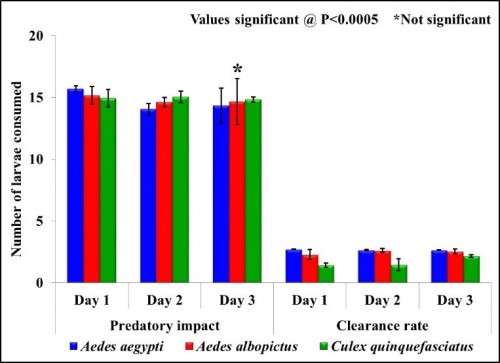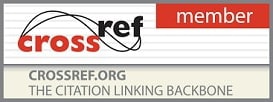Vol. 6, Issue 6, Part A (2019)
Biocontrol efficiency of Nepa cinerea Linnaeus 1758 (Hemiptera: Nepidae) against the vectors of dengue and filarial fever
Author(s): Grace Marin, Subramanian Arivoli and Samuel Tennyson
Abstract: Mosquitoes are important vectors of several tropical diseases. Aquatic insects used as biocontrol agents for mosquitoes are given prime importance because of its ecofriendly nature. In the present study, the adults of Nepa cinerea were tested for its biocontrol efficiency against the instars of Aedes aegypti, Aedes albopictus and Culex quinquefasciatus. More preference was given to the III instar with regard to stage preference, and Aedes aegypti followed by Aedes albopictus and Culex quinquefasciatus with reference to the experimental vector species. The predatory impact and the clearance rate were high in Aedes aegypti followed by Aedes albopictus and Culex quinquefasciatus with values ranging from 14.05 to 15.70; 14.63 to 15.15; 14.83 to 15.05; and 2.64 to 2.71; 2.29 to 2.54; 1.43 to 2.17 per larvae per day predator respectively. Therefore, it can be concluded that Nepa cinerea adults could be used as an additional biocontrol agent against the vectors of dengue and filarial fever.
Related Graphics: Click here for more related graphics

Fig.: Predatory impact and Clearance rate of Nepa cinerea against III instar larvae
Pages: 39-42 | 1288 Views 258 Downloads
How to cite this article:
Grace Marin, Subramanian Arivoli, Samuel Tennyson. Biocontrol efficiency of Nepa cinerea Linnaeus 1758 (Hemiptera: Nepidae) against the vectors of dengue and filarial fever. Int J Mosq Res 2019;6(6):39-42.







